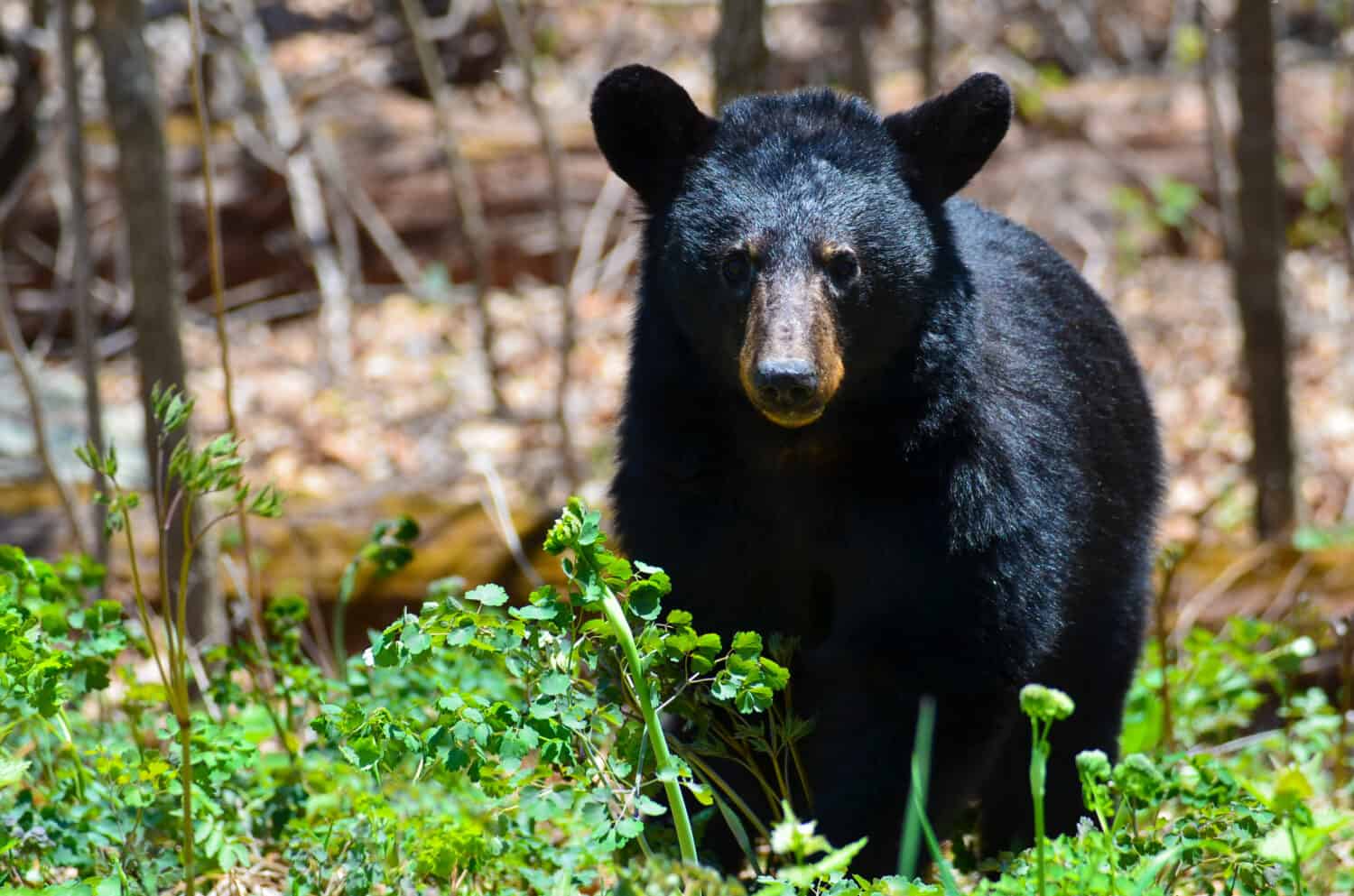Virginia is a very green and beautiful state. There are lots of trails to walk and birds to seek. Hunting is also a popular sport and hobby in Virginia, especially for black bears. According to experts, black bear sightings are uncommon in the state, although there is a population of around 17,000. These shy animals are hard to catch and although dangerous, stay away from humans. North American black bears are quite large, but they are the smallest bear species in North America. With how big they get, you can imagine just the size of the state record. Follow along to discover the largest black bear ever caught in Virginia and other fun black bear facts.
What is the Largest Black Bear Ever Caught in Virginia?
According to the Boone and Crockett Club Virginia State Big Game Records, the largest black bear ever caught in Virginia scored a 22 9/16. Stacy L. McLeod caught this walking giant in 2003. A hunter, Clealen E. Dove, nearly beat Stacy’s record in 2010 when the hunter caught a 22 8/16 scoring black bear. Instead, he tied for second place with Roger O. Wyant.
Although not listed under the Boon and Crockett Club Virginia State Big Game Records, in 2013, Tyler Napier killed a black bear on his family’s farm. The black bear was 728 pounds and stood at an impressive 7 feet and 2 inches.
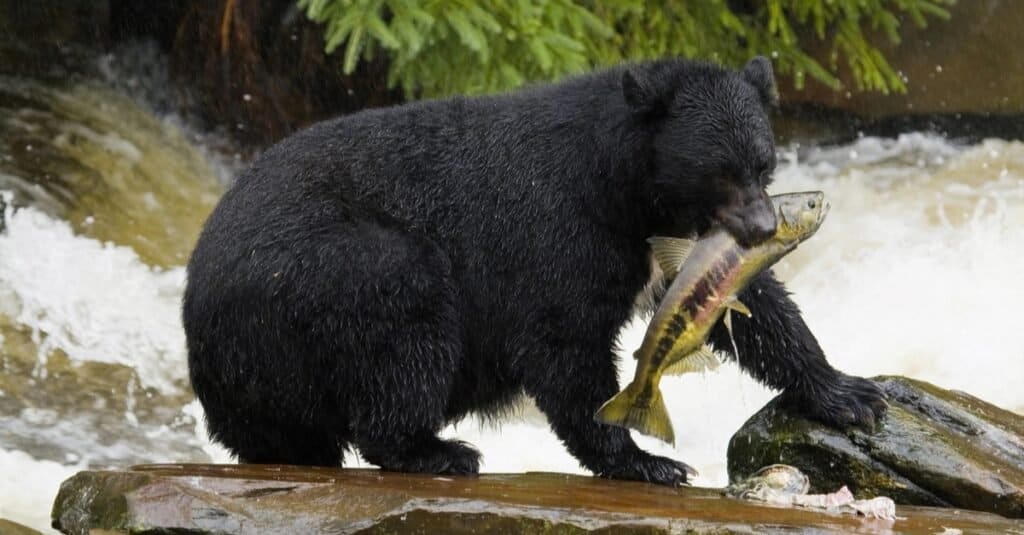
According to the Boone and Crockett Club Virginia State Big Game Records, the largest black bear ever caught in Virginia scored a 22 9/16.
©emperorcosar/Shutterstock.com
About North American Black Bears
North American black bears have a wide range in the United States. They are endemic to North America. Although medium-sized, they are the smallest bear species on the continent. Currently, while their population is decreasing, American black bears are listed as Least Concern on the IUCN Red List. Continue reading to learn more about these amazing animals.
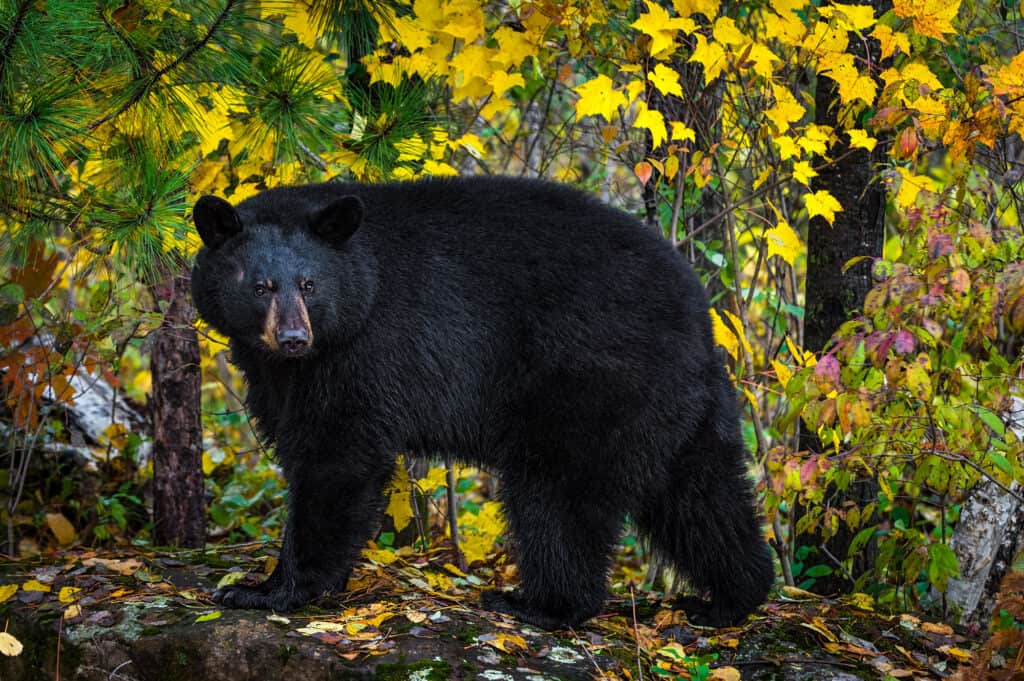
North American black bears are endemic to North America.
©Holly Kuchera/Shutterstock.com
Appearance and Size
American black bears have a distinct appearance. It’s unlikely you’ll confuse one with a grizzly or polar bear, the other two bear species in North America. However, while American black bears have the word ‘black’ in their names, not all of them have black coats. Instead, reddish-brown or cinnamon-colored coats are common in black bears. The coat color depends on the region and subspecies. Some black bears even have silvery-grey coats, like the glacier bear. Most black bears in Virginia though, have dark brown to black coats.
So, how big can these bears get? On average, American black bears weigh about 90 to 551 pounds. Female black bears are smaller than male black bears. Typically, black bears in the northwest are also larger than those living in the southeast. Although very rare, some black bears can weigh over 1,000 pounds. Their weight also depends on the season. Black bears are heavier during fall, right before hibernation.

Not all black bears have black fur.
©iStock.com/christiannafzger
Distribution
North American black bears have a wide distribution. These lovely bears are found throughout the United States and parts of Canada. Sadly, while their population is considered Least Concern, they are declining because of habitat loss. Historically, American black bears only lived in heavily wooded forests throughout the continent, but are venturing closer to neighborhoods and larger cities. In the United States, the black bear population varies a lot depending on the state. For example, Alabama is only home to about 200 black bears, maybe even less, while Alaska hosts over 100,000. Sadly, there are a few states where permanent bear populations are locally extinct. These states include Kansas, Iowa, Indiana, Illinois, and Delaware.
Diet
North American black bears have a wide diet. Although black bears eat meat, they mainly eat plants and roots. Depending on the region, nearly 85% of a black bear’s diet is made up of vegetation. Black bears change what they eat with each season. In summer, some black bears, for instance, consume more fruits, like berries, and soft masts. During spring, after waking up from hibernation, black bears feast on carrion from winter-killed animals. Although black bears can hunt mammals, the bulk of their animal diet comes from insects. American black bears eat bees, moths, ants, and beetles. Some subspecies that live near water also consume fish. They hunt for fish at night as during the day their fur is too noticeable. Black bears don’t just eat bees, but also honey. These sweet-tooth bears raid beehives.
Predators
Very few animals are gutsy enough to hunt or attack a black bear. Instead, the main predators of a black bear are humans! Still, young cubs are vulnerable to mountain lions, bobcats, coyotes, wolves, and other bears.
Other Mammals in Virginia
Virginia is home to at least 75 mammal species, other than American black bears. Next time you’re visiting this state, keep an eye out for the mammals listed below!
Bobcat
Another mammal, apart from black bears found in Virginia is the bobcat. Bobcats are medium-sized wild cats native to North America. You can find them throughout southern Canada, the United States, and parts of Mexico. They are very abundant and are listed as Least Concern on the IUCN Red List. Bobcats range in size depending on the region, but they are generally 18.7 to nearly 50 inches long. Bobcats are best known for their short bobbed tail. On average, female bobcats are smaller than males.
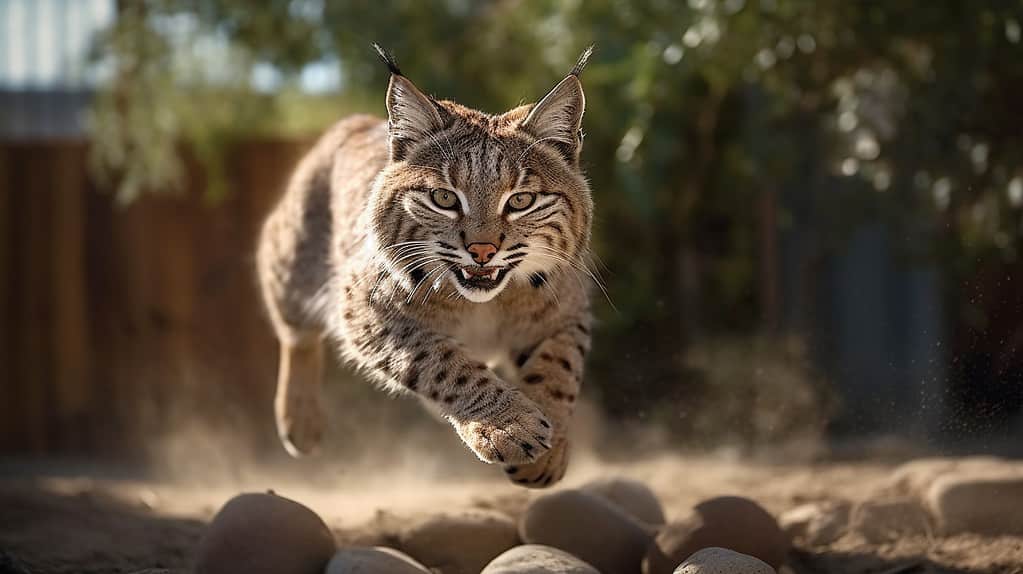
Whitetail Deer
The next mammal on our list is the whitetail deer. This mammal is native to North America, Central America, and South America. There are several subspecies and they range in size. Some of the smallest whitetail deer live near the Florida Keys. In Virginia, experts estimate there are about 1 million whitetail deer. You can find them throughout the state, in both thick forests and more urban areas like parks and suburbs.

In Virginia, there are about 1 million whitetail deer. Whitetail deer are sometimes called Virginia deer.
©Tom Reichner/Shutterstock.com
American Mink
American minks also live in Virginia. The American mink is a semi-aquatic mammal native to North America. These very common animals are currently listed as Least Concern on the IUCN Red List. You can also find them in other countries within Europe, South America, and Asia as they’ve been widely introduced. American minks are bushy and somewhat slender. Male American minks are between 13 and 18 inches long, while females are 12 to 15 inches.
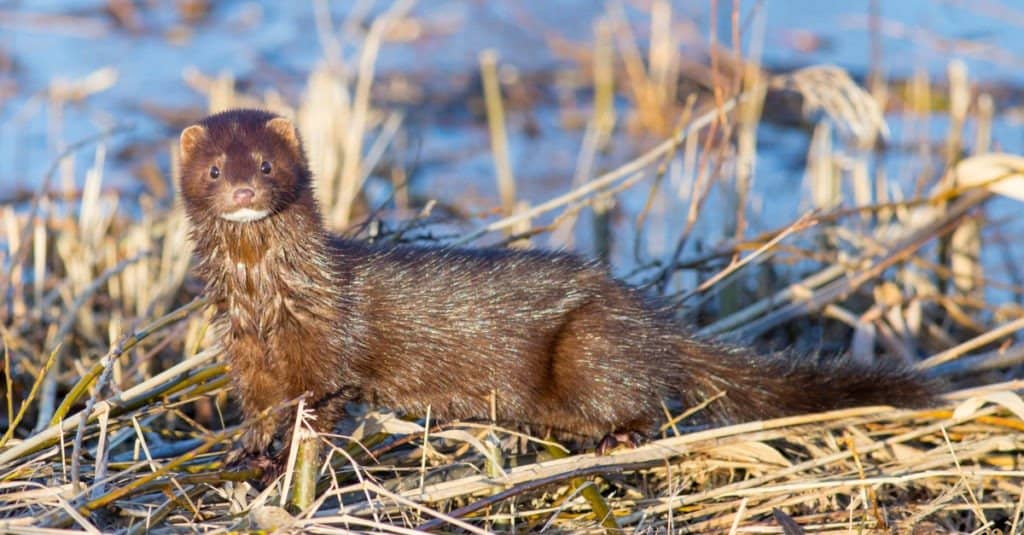
American minks are widespread. They’ve been introduced to other parts of the world apart from North America.
©shauttra/Shutterstock.com
North American River Otter
Also in Virginia are North American river otters. These playful and social animals have a wide range. They are only found though in North America. These lovely semiaquatic animals are so abundant that they are listed as Least Concern on the IUCN Red List. North American river otters are members of the family Mustelidae. They are excellent hunters eating anything from small insects to turtles and small mammals.

North American river otters have a wide diet. They are excellent hunters and consume insects, small mammals, fish, turtles, and frogs.
©iStock.com/Mirko_Rosenau
Southern Flying Squirrel
Also found throughout Virginia are southern flying squirrels. These small rodents are members of the Sciuridae family. Like the other mammals on our list, they are listed as Least Concern on the IUCN Red List. This flying squirrel lives from southeastern Canada to Florida in deciduous and mixed woods. They have large eyes, grey-brown fur on top, and cream-to-white bellies. Despite their name flying squirrels don’t fly, but glide.
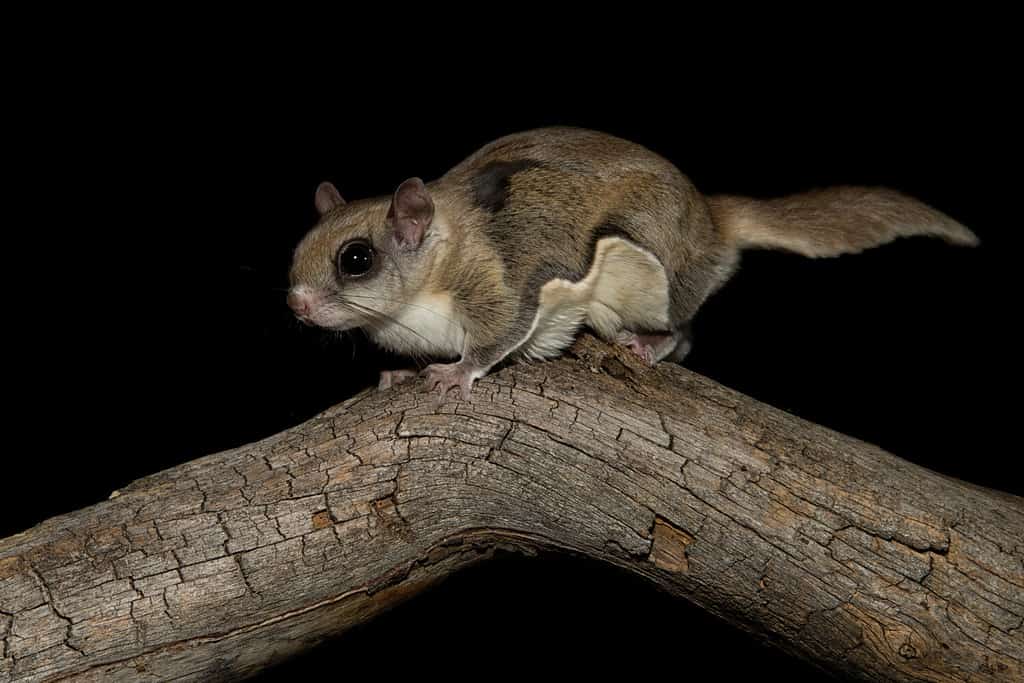
Southern flying squirrels don’t fly, instead, they glide.
©Agnieszka Bacal/Shutterstock.com
Thank you for reading! Have some feedback for us? Contact the AZ Animals editorial team.

